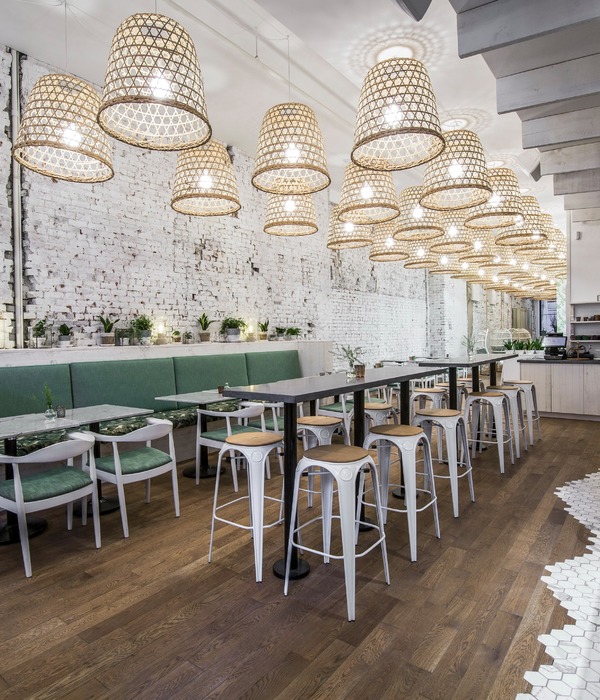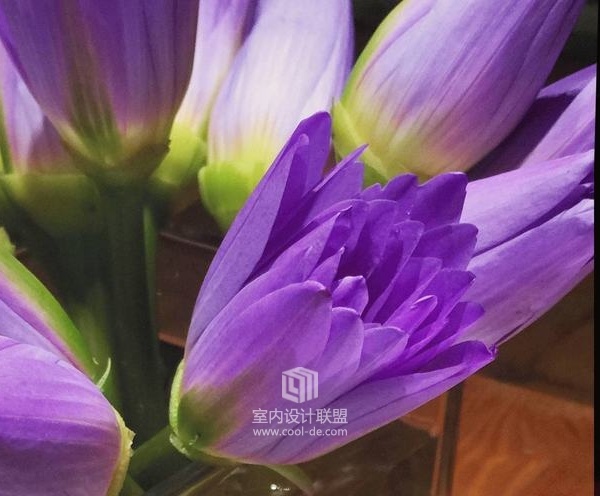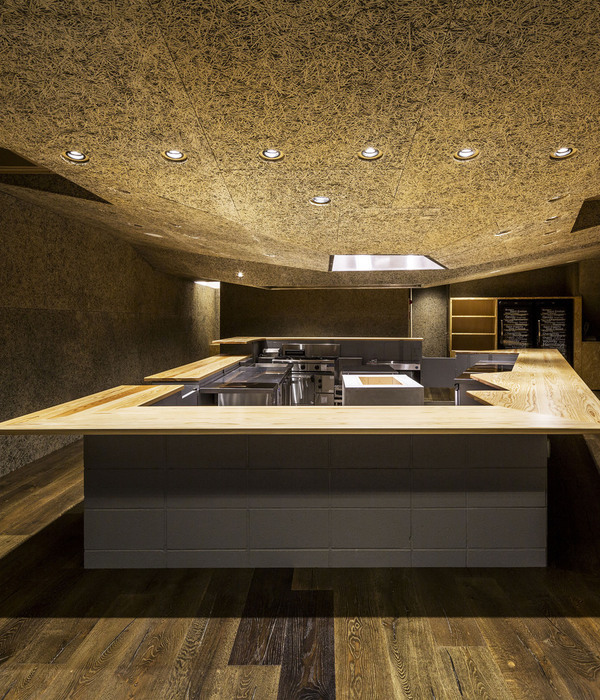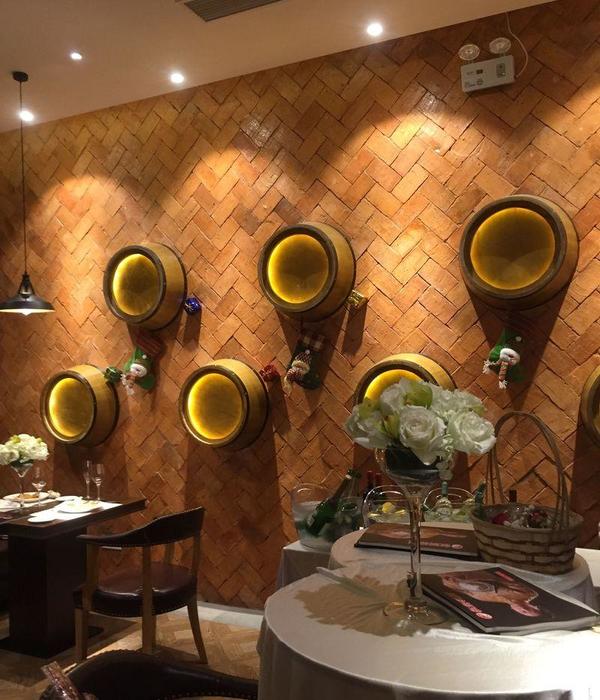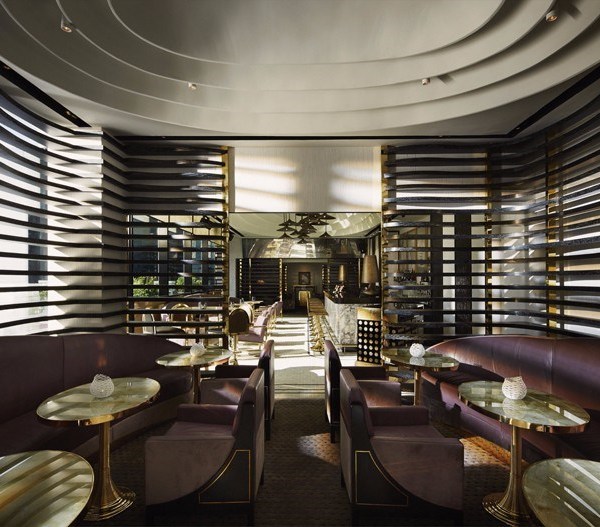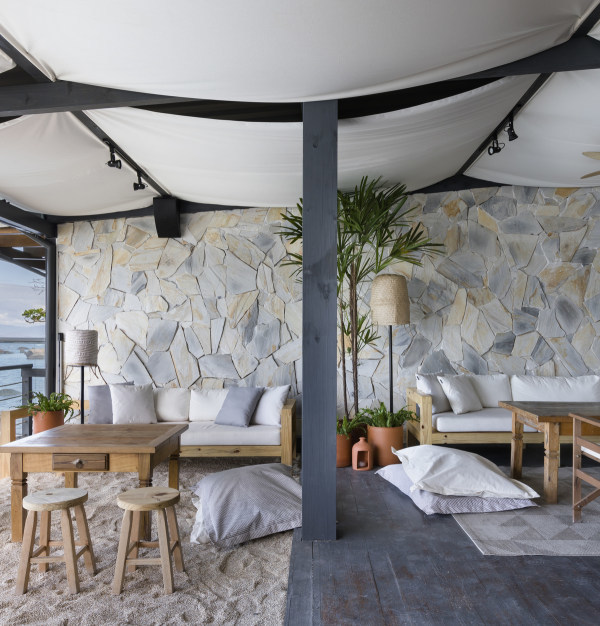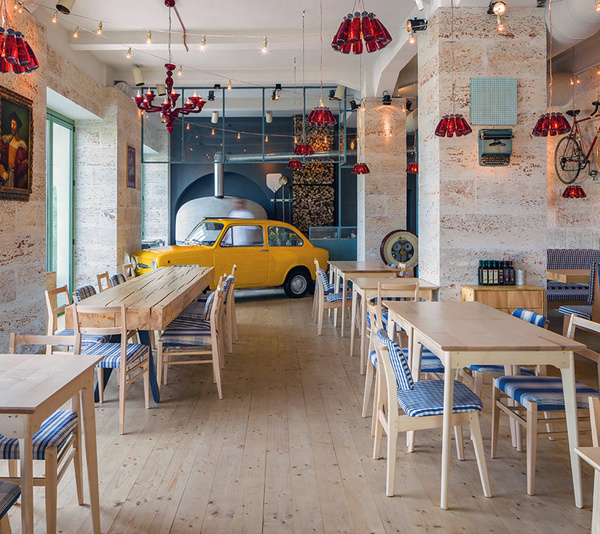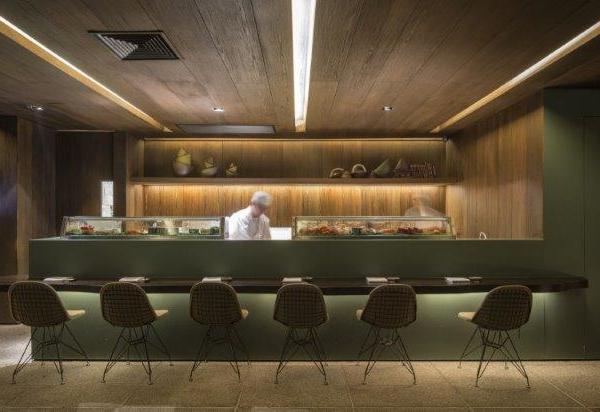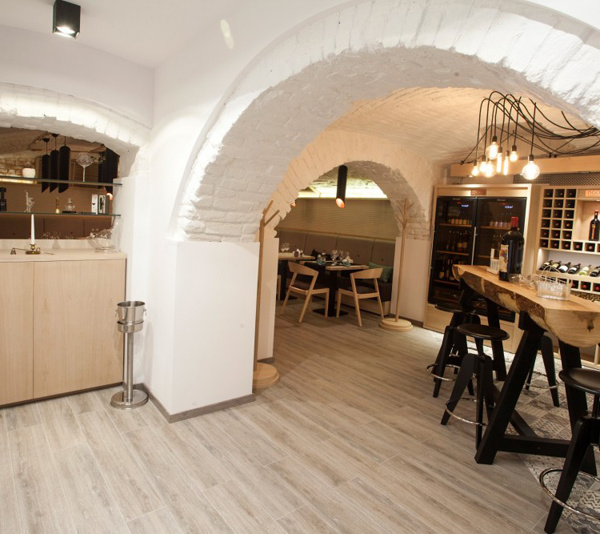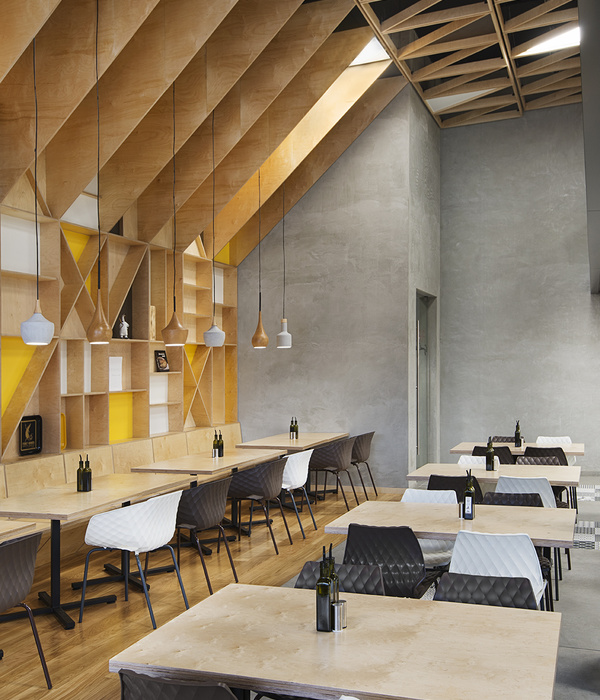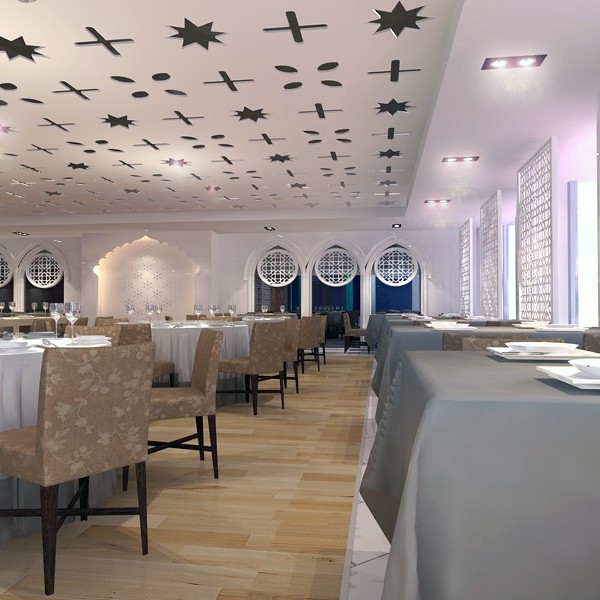In this new restaurant, refurbished 25 years after he first designed it, the same architect continues telling customers about Sardinia (a narration of the proprietor’s home island that he previously began with the same company’s other venues), here evoked through wide natural stone bas-reliefs referring to the unmistakable ancient weaving technique named a pibiònes (grained texture), peculiar to that island.
The access to the restaurant and the whole building is through a shop front very much respecting the London Victorian tradition in design (though made “fresher” by the use of a quite unusual colour). The solid wall which previously divided the entrance lobby from the dining room facing the street has now been removed and replaced by a full height fire resistant glazed divider, so as to give a more visual opening and greater breadth to an otherwise overly compressed space.
At the end of the small entrance lobby the restaurant door and the one giving access to the staircase leading to private upper floors, combined in their respective open and closed position, form an unitary full height panel veneered with dark brown stained oak unmistakably directing visitors towards the main dining room, the primary feature of which is a first wide wall “tapestry” made out of natural stone (finely chiselled by LITHEA’stone art masters according to the architect’s design), inspired by typical Sardinian fabrics where decorative patterns (among which the lapwing bird, here reproduced – see photo gallery here below - considered as a symbol of fertility and prosperity, is one of the most recurring ones) are enhanced by a sort of grain in relief (pibiònes) generated by sequences of small loops executed with the weft thread. On the right side as one enters is the bar/reception unit, consisting of a multifunctional counter completely made out of “coffee-bean” brown Corian®, behind which, in between the dining rooms at the front and at the rear, is the access to the staircase leading to the kitchen located in the basement.
Opposite to the access to the inner dining room is a second stone “tapestry” covering the whole far wall and featuring a new pattern once again based on the iconography of the lapwing bird. On the right side a full height door veneered with dark brown stained oak opens on a tiny lobby giving access to the toilets, where the mirrored door panels of the wardrobe cabinet provide the illusion of a deeper space.
All the premises walls are covered with a matt wax finished blend of resin and cement finely grained, coloured in the warm and dark shades of dove grey and burnt coffee which, while producing an effect of diffuse semi-darkness, give prominence to the sepia colour bas-reliefs lit by a vivid grazing light and enhance the unusual “duck egg” colour of the genuine linen tablecloths, also featured in the colour of the shop front and harmonizing with the wood floor finished with a special hardwearing coating paint.
[IT]
In questo nuovo ristorante l’autore prosegue il racconto della Sardegna – narrazione della terra d’origine del proprietario precedentemente iniziata in altri locali della stessa azienda – che qui viene evocata da grandi bassorilievi parietali in pietra naturale color seppia, che fanno riferimento alla inconfondibile tecnica di tessitura artigianale detta a pibiònes, tipica dell’isola.
L’accesso al locale si apre su un fronte strada rigorosamente rispettoso della tradizione Vittoriana londinese. La parete che originariamente separava lo spazio d’entrata dalla sala da pranzo affacciata sulla strada è stata abbattuta e sostituita con un divisorio interamente vetrato, così da ampliare visivamente ambienti prima troppo compressi. In fondo al piccolo atrio d’ingresso si può accedere ai piani superiori (ad uso privato) o alla sala da pranzo principale, dominata da un primo “arazzo” in pietra di grandi proporzioni (minuziosamente cesellato su disegno dell’autore dai maestri dell’arte lapidea della LITHEA) che riprende i tipici tessuti sardi in cui i motivi decorativi (fra cui la pavoncella, qui rappresentata, considerata simbolo di fertilità e prosperità, è fra i più ricorrenti) sono definiti da una sorta di chicchi (pibiònes) in rilievo formati da piccoli anelli eseguiti col filato di trama. Sulla destra di chi entra si trova il nucleo bar/reception costituito da un comptoir attrezzato realizzato interamente in Corian® color caffè, alle spalle del quale è ubicata la discesa alla cucina. Un secondo “arazzo” lapideo copre l’intera parete di fondo della sala posteriore e propone una variante del motivo decorativo della pavoncella. Sulla destra un pannello/porta a tutt’altezza, in rovere tinto wengé, si apre sul piccolo disimpegno delle toilettes. Le pareti di tutto il locale sono trattate con un cemento/resina a grana fine, rifinito a cera, nelle calde e scure tonalità del grigio tortora e caffè bruciato che, producendo un effetto di diffusa penombra, esaltano i bassorilievi color seppia illuminati da una vivida luce radente e danno risalto al tovagliato in lino naturale dall’inconsueto color “duck egg”, che rimanda a quello della facciata ed armonizza col pavimento in doghe di legno rifinito con un manto di vernice coprente ad alta resistenza al calpestio.
{{item.text_origin}}

